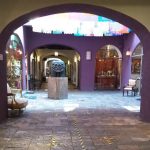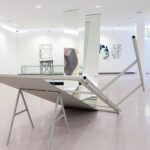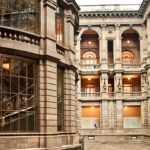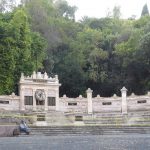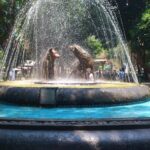The Multi-faceted Symbol of the City
The Angel of Independence and what you should know!
If you ask Chilango people what symbol best represents the city, nine out of ten will name El Ángel . More officially known as the Monument to Independence, the Monumento a la Independencia has stood guard over its own glorieta on Paseo de la Reforma since the centennial celebrations of Mexican Independence in 1910. It’s something few visitors to the city will miss, but not one many people today know much about.
Here’s everything you should remember about the Angel of Independence.
The monument was designed and built by architect, Antonio Rivas Mercado , whose house is today a museum .
It originally had nine steps at the base but because the ground is sinking, 14 more had to be added in later years.
The bronze sculptures at the bottom represent law, war, justice and peace .
Rivas Mercados’ bronze statue of a giant lion with a child symbolizes “the Mexican people, strong during War and docile during Peace.”
The column is 36 metres (118 ft) high.
Inside a 200-step staircase leads to a lookout platform.
The capital is in the Corinthian-style, adorned by four eagles with extended wings.
Atop it all is a 6.7 metres (22 ft) statue of the Greek Victory goddess, Nike.
Designed and cast by French-Italian artist, Enrique Alciati, it weighs seven tons.
The crown of laurels is held above the head of Miguel Hidalgo, below. The 3-link chain in her other hand symbolizes 300 years of Spanish rule, broken, and thus freedom.
The cornerstone of the monument was laid in 1902.
During an earthquake on July 28, 1957, the crashed to the ground and was broken. Restoration took more than a year.
The original head of the sculpture is now kept in the Mexico City Historic Archive , within the Palace of the Counts of Heras & Soto .
Immediately inside the door to the monument is a statue of William Lamport , an Irishman executed by the Spanish crown for sedition, in 1659.
The remains of the 14 heroes of the War for Independence are buried within the monument.
Father Miguel Hidalgo y Costilla: “Father of the Nation” and the original leader of the movement for independence.
Father José María Morelos y Pavón: A general and independence leader after Hidalgo’s execution.
Ignacio Allende: Lieutenant general of the insurgent army and later rebel leader.
Juan Aldama: A rebel captain and conspirator.
José Mariano Jiménez: Hidalgo’s lieutenant colonel.
Guadalupe Victoria: Commander of the insurgent army and first President of Mexico.
Vicente Guerrero: Insurgent general following the death of Morelos and second President of Mexico.
Nicolás Bravo: Commander of the rebel army and later President of Mexico on three occasions.
Mariano Matamoros: A priest who served as Morelos’s lieutenant general.
Andrés Quintana Roo: A prominent Constitutional supporter.
Leona Vicario: A journalist, and rebel supporter.
Francisco Javier Mina (Xavier Mina): A Spanish officer who joined the rebel cause against the absolute monarchy of Ferdinand VII.
Pedro Moreno: Insurgent
Víctor Rosales: Insurgent
The arduous climb to the top of the tower can only be done weekends from 10 AM to 1 PM.
William Lamport sculpture immediately inside the door to the mausoleum.

